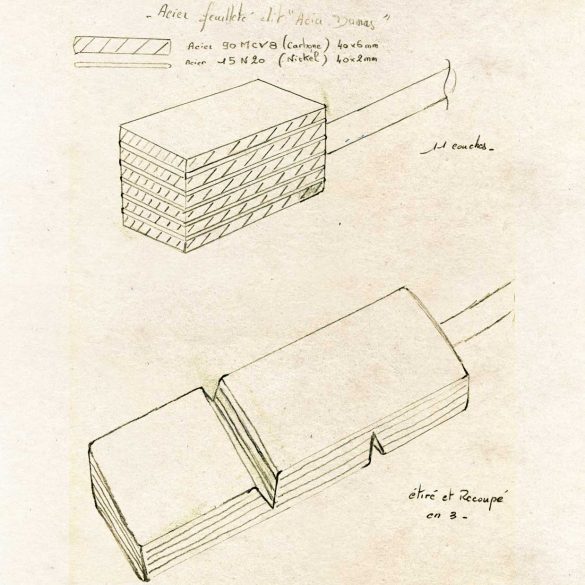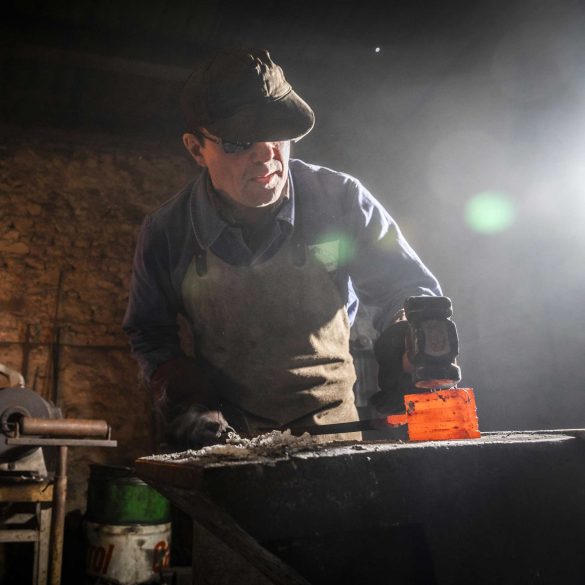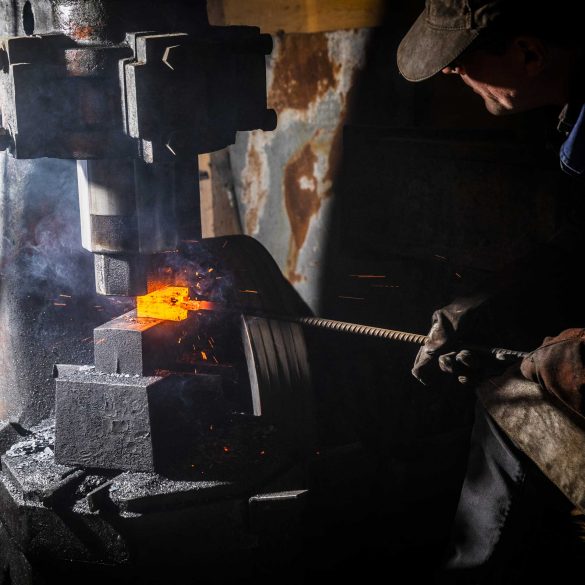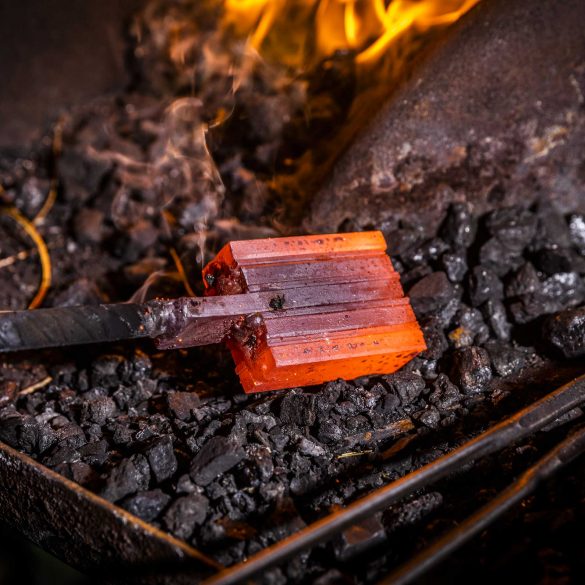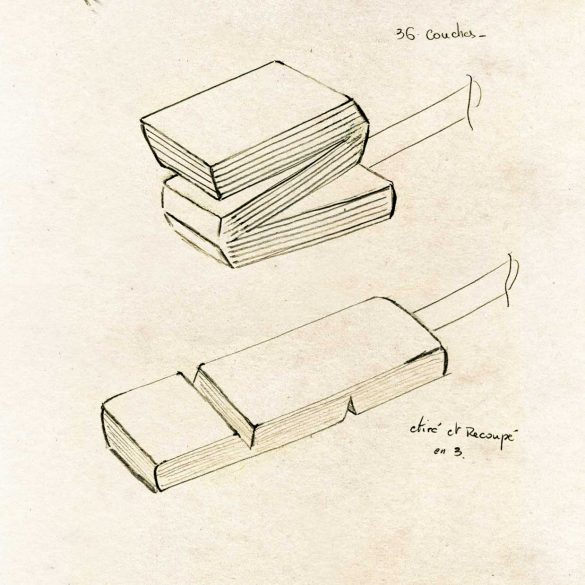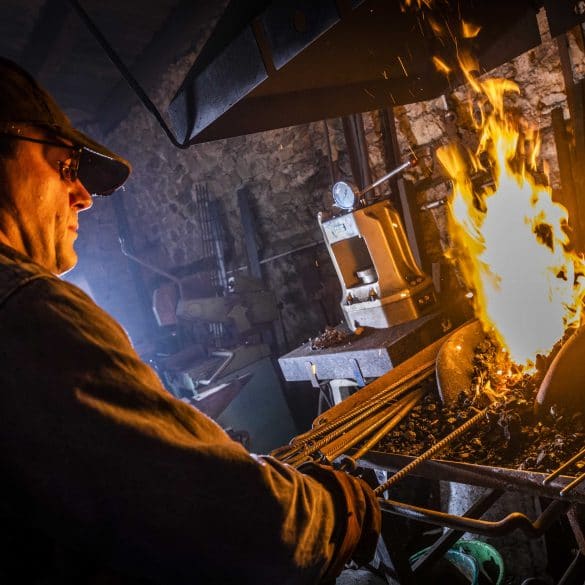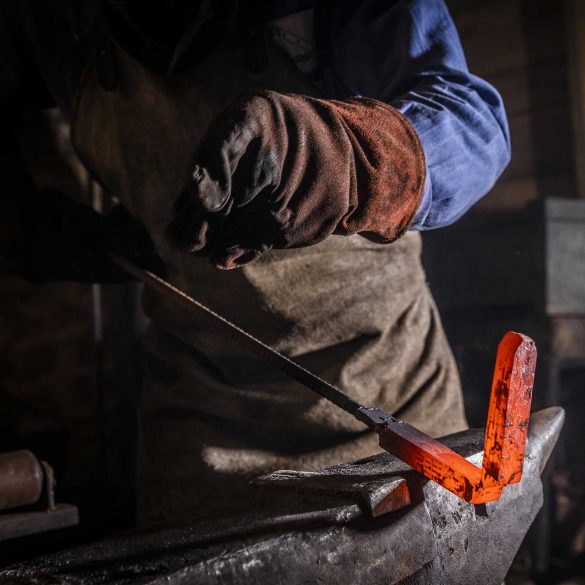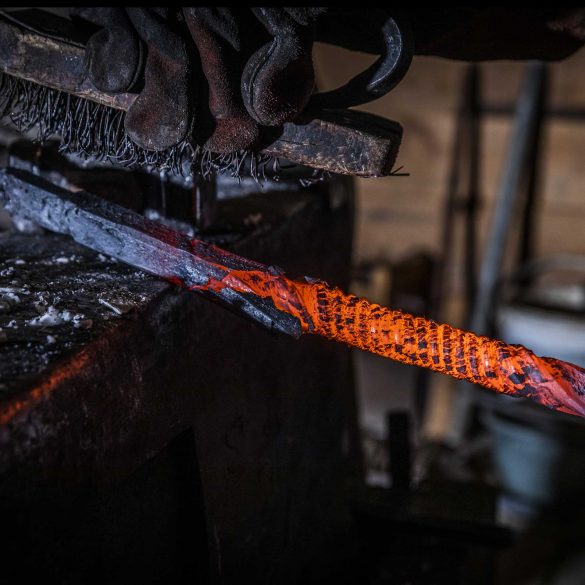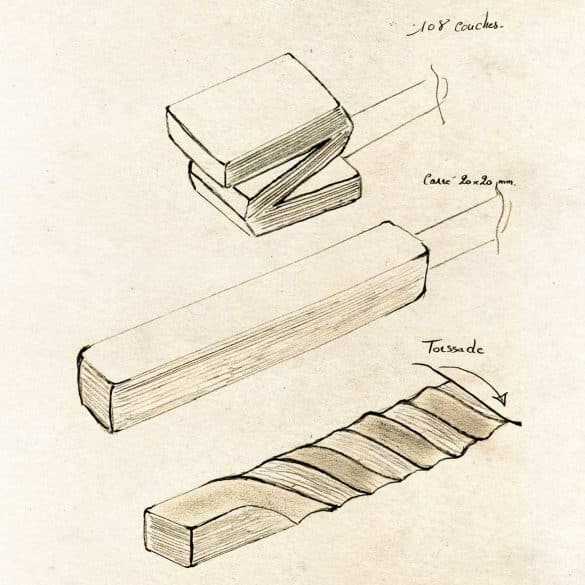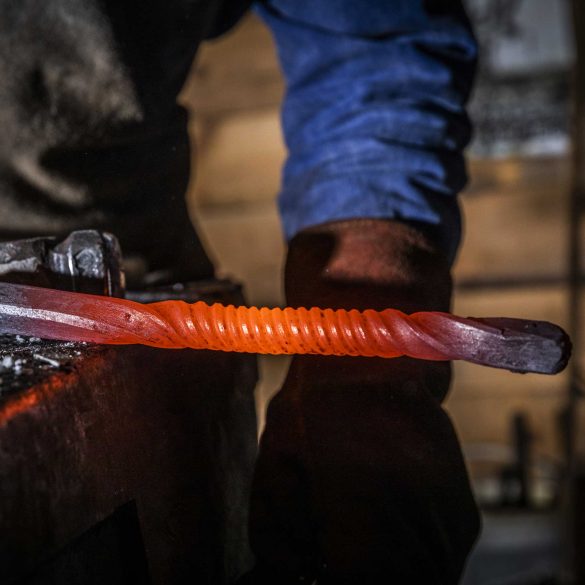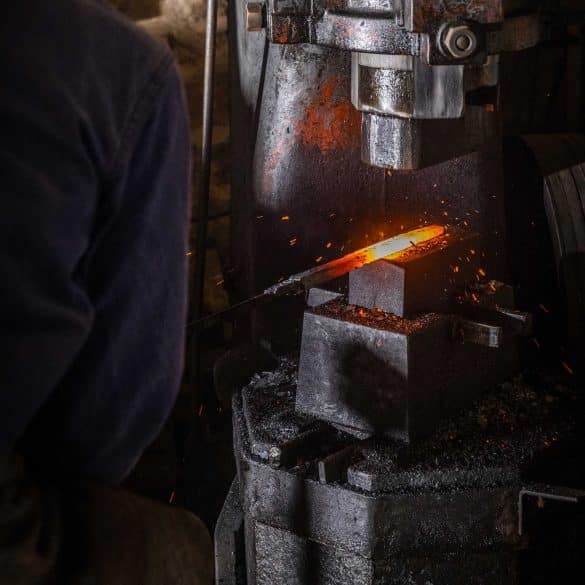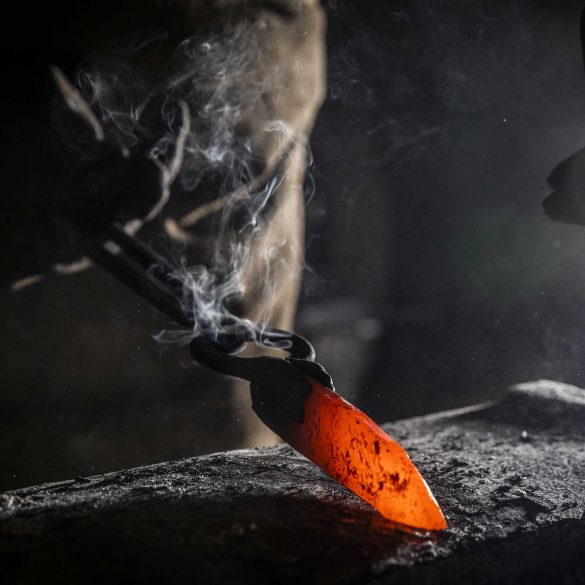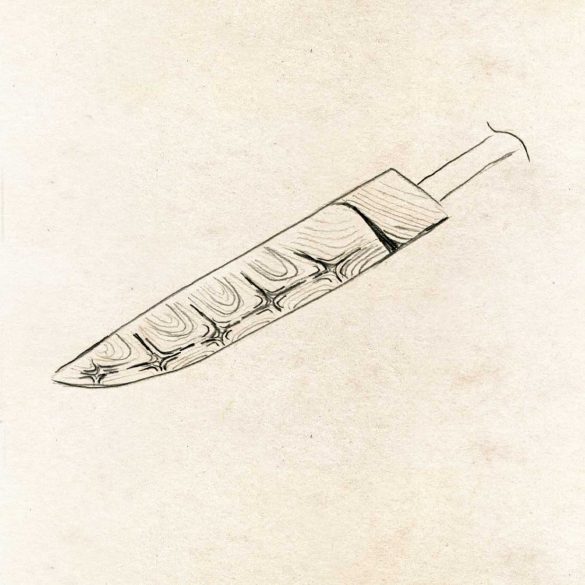Behind this “orientalisation” is hidden an ancient forging technic whose practice and origin would be found in Celtic times. In the Western world, it experienced a peak in the Merovingian period.
Without wishing to retrace history, be reminded that this technic was dormant before reemerging in the eighteenth and nineteenth centuries especially through the art of gunners (canon makers).
In the twentieth century, it conquered the world of knife makers in the USA, in Germany and France where it has been developing since the late 80s .



